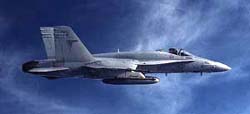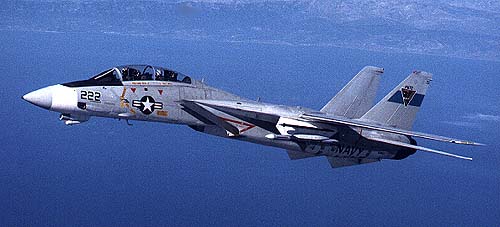 |
 |
Volvo Pilot I sometimes get E-mail from people curious to know what I do for a living. The answer is that I am a federal employee working in the electronics end of Naval Aviation. While I'm not a flyer myself, I make it a point to read many of the various safety publications the Navy targets at its aviators (as Navy pilots are known). I sometimes get E-mail from people curious to know what I do for a living. The answer is that I am a federal employee working in the electronics end of Naval Aviation. While I'm not a flyer myself, I make it a point to read many of the various safety publications the Navy targets at its aviators (as Navy pilots are known).
These feature stories -- usually first-person accounts -- of accidents, incidents and near misses; the thrust is generally "Boy, I really screwed up and didn't realize it until [fill in the blank]; don't fall into the same trap I did." Coming from a group of people not universally recognized for their modesty, these stories take on a special poignancy. Realize that these pilots (as the Air Force calls them) are well-educated, highly and continually trained, meticulous in their attention to detail and have the reaction speeds of rabbits; nevertheless, once in a while, one still manages to transform a very expensive bunch of aluminum into a smoking hole in the ground. In order to minimize these occurences, we periodically "stand down" from our routine operations and take a day to review the way we do business -- flying, maintenance, procedures, documentation -- anything that affects safety. While such sessions sometimes pinpoint a troublesome detail or two, the main purpose is "attitude adjustment;" a reminder that dealing in powerful machinery has inherent dangers, and a review of all the things we've already heard a hundred times that should keep us out of trouble if only we had the sense to pay attention. I want to take a similar look at the way we operate our Volvos. However survivable they may be in the event of a wreck, wouldn't you just rather avoid putting it to the test? Mach 2 in an F-14 or 70 MPH in a P1800, the principles of safety are the same.
Number one priority: Drive the Car! There are well-documented cases of pilots simply flying their planes into the ground because they were busy trying to get some non-essential cockpit gadget to work. Same thing.
Maintain "Situational Awareness" Is there a lane closure half a mile ahead? Where is the car that was in my right rear-view mirror five seconds ago now? Is that ladder in the pickup truck ahead about to fall out? Are those kids running across the lawn really going to stop at the sidewalk? Those are the sort of questions you want to ask all the time you're driving, and I'm sure you do. Still, when was the last time an open-piped motorcycle you never saw blazed past you on the right and scared the bejeezus out of you? Situational awareness.
Keep your options open Now, if your "situational awareness" is working for you when driving, you will be aware of your options at all times. When the ladder falls out of the pickup into the road in front of you, you can dodge over two lanes and avoid ramming it. This is because you didn't throw away your "leave enough time to react" option by following too closely, you knew there was room in those two lanes without having to take a fresh look, you weren't unsnarling a cassette tape at the time, and you anticipated the problem. You kept yourself in a position, physically and mentally, where you could exercise a viable option in an emergency. You were not left with nowhere to go but straight ahead. You always have one option not available to flyers: you can pull off to the side of the road and stop (at least, you can get off the freeway at the next exit). What is so important that you have to drive into that fog bank, and the pile of cars that may well be in it? Nothing can ruin a pilot's day faster than flying into a cloud and meeting up with something solid. Of course, you always wear your safety belt, right? I can't imagine the most boneheaded pilot in the Navy saying, "I won't take the parachute this time -- I'm only making a ten-minute hop from the boat to the beach." Nevertheless, some drivers think that because "I'm just running down to the store," wearing a safety belt is dispensible. Incredible!
Smooth is good In a recent ipd Newsletter, Scott Hart suggests the following test: pick out a familiar corner or sharp turn in a road when there's no traffic. Drive around it at 10 MPH, and note exactly how far you have to turn the steering wheel. Now go back and do it again at your normal driving speed. Did you have to turn the wheel more? If so, you're over-controlling the car. This is not an admonition to drive your Volvo slowly -- rather, you will go fastest by being smooth and precise. Feed in steering inputs; don't yank them. Take a second to open the throttle fully; don't just slam down the pedal. Back off the gas long before you reach that traffic signal; don't just stab at the brakes when you get there. Driving smoothly will get you to your destination as quickly -- maybe even sooner -- than jerking the car around will. The car will last longer, you'll buy less gas, and you'll be safer. The trick is to anticipate what is happening well ahead (back to the "situational awareness"). This also gives you lots of opportunity to signal your turns and to brake gently enough that the "nugget" following two feet from your rear bumper will have a chance to avoid stuffing his Mustang up your tailpipe. Sometimes, courtesy is the best defense.
Common sense During one particularly bad stretch when it seemed to be raining Tomcats and Warthogs, I asked a squadron commanding officer what advice he had for his aviators. "Well," he said, "if you find yourself saying 'I probably shouldn't be doing this, but...' you're right. You shouldn't." His advice for me was to wear a hard hat when venturing outdoors. I saw the results of a poll a while back that asked drivers to rate their capabilities. 90% rated themselves as "above average." I'm no statistician, but it seems to me that 40% or so had to be wrong about their driving proficiency -- probably the same sorts that view driving as a form of combat and think most other drivers are idiots. I suggest that these people are a greater hazard to navigation than the rest of us. Now, I'm certainly not describing you, am I? Leave combat to the fighter pilots and racecar drivers, please. For every time a Stealth Fighter sheds a wing flying by at an airshow (which is pretty mysterious -- I know the Air Force maintains and inspects its aircraft as rigorously as the Navy), there are a dozen other crashes that didn't need to happen. For every car wreck caused by a truck running a stop at a blind intersection, there are a dozen others that could have been avoided or minimized by good driving habits and a little foresight. Now, I'm pretty sure that nothing I've said here is news to you. We all drive imperfectly, stuff happens over which we have no control, and, someday soon, another guy on a loud motorcycle will take his strafing run at us and shoot us down. Just do what you can to tilt the odds in your favor. Driving a Volvo is a great start, but it doesn't make you immortal. Stay safe out there.

|